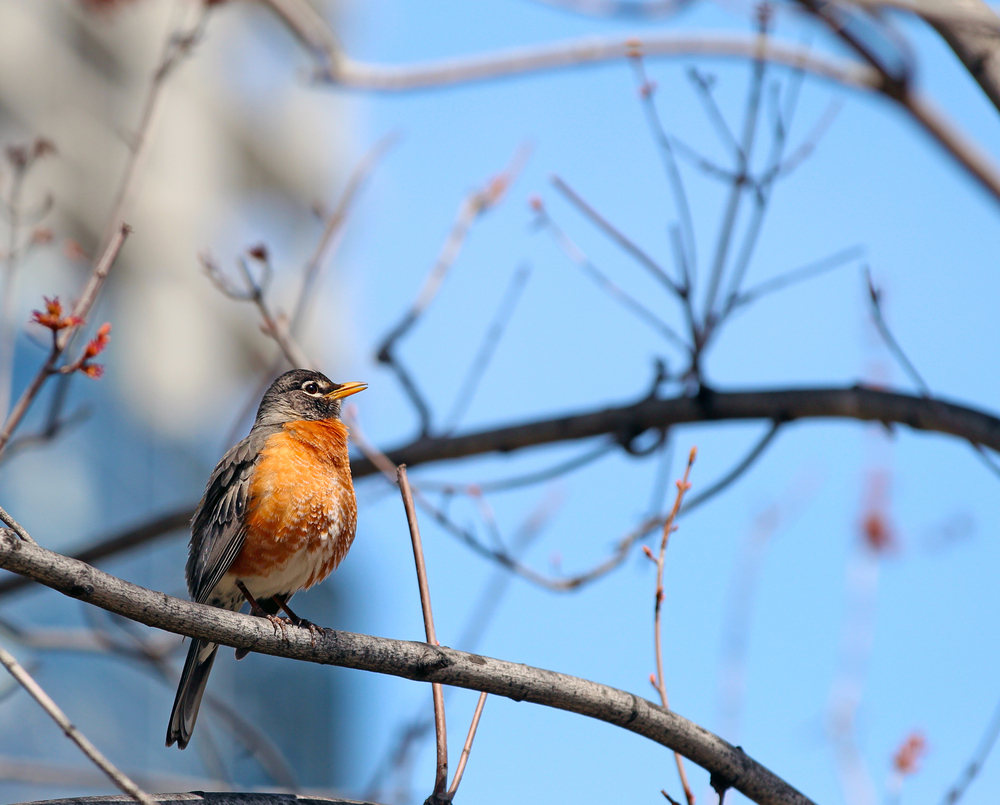
The robin is a well-established messenger of spring, and we are ready to move on from a long wintertime.
It’s officially spring
Last week, most of us set our clocks ahead an hour as an annual ritual ahead of the official beginning of spring, longer daylight hours, milder temperatures, and more outdoor activities.
As of today, the preliminaries are over, and we can actually celebrate spring. It has arrived. The vernal or spring equinox was this morning just before daybreak. While the weather may not reflect it everywhere just yet, spring is here. It won’t be long until our local weather conditions match our springtime attitudes.
Spring is long overdue
A year ago, our springtime looked and felt much different. We were preparing for or already experiencing lockdowns, mask-wearing, and other restrictions on how many people could be in one place at a time and how close they could be. Many businesses closed while others adapted. Many of us learned to work from home.
A year later, we are looking forward to the springtime we didn’t get in 2020. It still may not be a full spring, but it should be closer. Many places are easing restrictions, and more people are being vaccinated. The past twelve months definitely have been unlike any other period of our lives.
Now, we are looking forward to resuming outdoor activities, returning to school and to the workplace, and having a more normal, pre-virus lifestyle.
The aging in place experience
As we have been living with the changes that have happened from about a year ago until now, and some even continuing, we have learned more about what it means to age in place. While everyone is aging in place daily where they are, most people don’t think of living in their home in these terms. Nevertheless, we are aging in place, and many of us have come to realize just how well this concept works for us.
Aging in place requires no advance preparation – that has been well-illustrated because a year ago when businesses shut down and many people remained at home, we had no advance notice. We weren’t able to consider how we wanted our homes to be modified to accommodate our needs – now or as we got a little older. We had to use what we had and make the most of it.
We learned that aging in place really does not need to have any advance notice or preparation. We began where we were and went from there. Fortunately, many of us found that our homes were much better suited to accommodate our around-the-clock needs than we would have thought beforehand.
Moving ahead with what we have learned
Many of us were surprised by how well our homes worked for us during the pandemic response. We had no advance notice that we would be based in our homes for an extended period – not being able to go to work, the gym, restaurants, or even dining in the customary way that we were used to experiencing. It was in a more limited way with restrictions on how we could access and use those facilities.
As we hunkered down at home, we found that we liked our homes, that they liked us, and that we could coexist quite nicely. This is the aging in place ideal – where people can remain in their homes long-term (as in over the years by choice, not by being essentially forced to remain in them during the pandemic) and those homes serving our needs reasonably well.
Our homes may not have been perfect in accommodating us and the other family members that were at home with us, but we found that we had a renewed bond with our homes that was satisfying. We found that we could live in our homes over time and have them meet our safety, comfort, convenience, and accessibility needs. Where they came up a little short, we could identify those areas and target them for improvement in the future to be ready for a more enjoyable long-term stay in our home – for whatever the reason.
Now that it’s turning spring, we are looking forward to opening the windows and letting our homes breathe. There are plenty of surfaces that we want to clean and disinfect. There are items that we have determined that we no longer need or that we can do without having in our space. We can move on into spring with an optimism of enjoying outdoor activities after having come through a longer-than-usual wintertime where we couldn’t leave our homes (first from the virus and then from the weather).
We have learned a lot about ourselves and our homes and our ability to happily age in place in them over the past few months. Now we can begin incorporating the little changes that we feel we would like to see to make our homes even better and more enjoyable.
